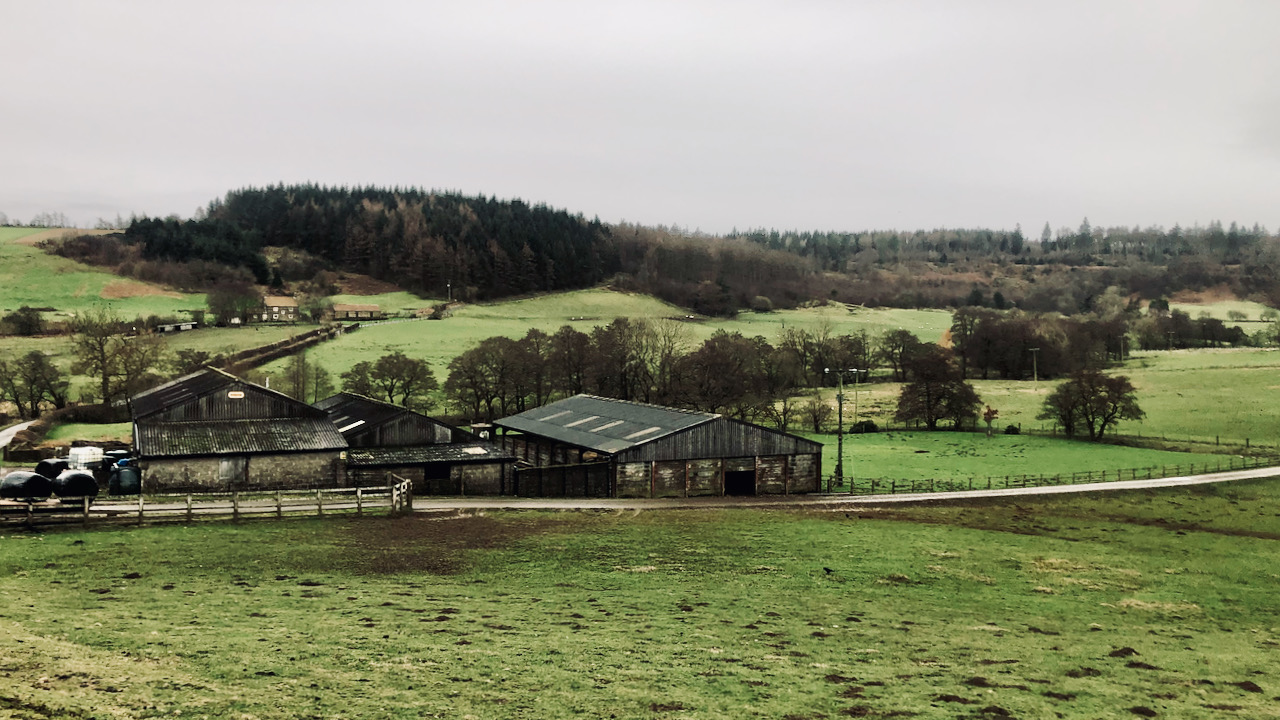A rather drab photograph capturing a drab-looking collection of barns, reflecting an exceptionally drab overcast day. The presence of a strong wind and rain in the air adds to the overall drabness.
Lounsdale — sometimes spelt Lonsdale — stands before me in all its aromatic glory. The barns, once known to my friendship group with the less than complimentary name of Smelly Farm, used to carry a scent that defied subtlety, hence the name. A farm, in the traditional sense of the word, it has never been. Its construction appears rooted in the swinging sixties, a testament to the more recent pages of architectural history. Contrastingly, Lonsdale Farm, perched behind upon the side of Coate Moor, boasts a lineage stretching back two centuries and more.
In 1806, Sir Charles Turner of Kirkleatham found himself in a financially tight spot and decided to offload his Kildale and Westerdale Estates to settle his debts. Back in 1662, the Turner family, prosperous merchants, had brought these estates from the Earls of Northumberland. The Sale Particulars are a wealth of information, documenting each acre of land and every dwelling included in the sale. Lonsdale Farm is listed, then occupied by Andrew Brown, a Tenant-at-Will, who paid an annual rent of £65.
Brown farmed 197 acres, which included all the fields we see today on the far side of the beck. However, this side, including “Smelly Farm,” was annotated as “Inclosures” on the hand-drawn map accompanying the sale, so did not fall under Brown’s agricultural holding.
In the 18th century, England’s farming landscape went through a massive shake-up. Landlords, ever on the alert for more profit, decided to parcel up their vast stretches into what they called Enclosures. These were basically fields with hedges or stone walls for boundaries which could be rented out as individual farms. Gone were the days of open fields and common lands shared by all the villagers. Sure, there had been a few ‘Inclosure Acts’ before, but it was between 1750 and 1800 that things got real intense.
In 1773 and 1775, Turner, with a fervour for enhancing his estate yields, enclosed vast expanses of Kildale. He ardently embraced new rotational practices and encouraged a more efficient utilisation of labour, endeavouring to cultivate substantial tracts of previously deemed ‘waste land,’ with the ultimate aim of optimising the revenues from his land.
This necessitated a reallocation of land to cottagers, creating small farms with a collection of different fields. The age-old ‘Strip‘ system fell into obsolescence, prompting the creation of fresh maps delineating the precise boundaries of individual fields and farms.
I guess that this land annotated as “Inclosures” was undergoing this improvement process, but had not yet been let.
By 1771, a good part of Cleveland’s commons and open fields had already been enclosed. The Reverend John Graves, writing in 1808 in his ‘History of Cleveland‘, specifically mentioned Turner’s land-grabbing activities when “upwards of 600 acres were enclosed and brought into tillage, and 200 acres more planted with Scotch firs and other forest trees, which are now (except in the most unfavourable conditions) in a flourishing condition.”
Despite the uninspiring name and modern construction, Smelly Farm is situated in a landscape with a history. Formerly part of the Kildale Estate, it carries the whispers of the agricultural revolution. While its aroma may be no more, the reverberations of the 18th-century enclosures portray a reminder of disrupted communities no longer able to farm the commons and open fields and with the young forced to head to the towns and cities for work.
Further Reading
Anthony, Cedric. “Glimpses of Kildale History”. Geni Printing. 2012.

Leave a Reply